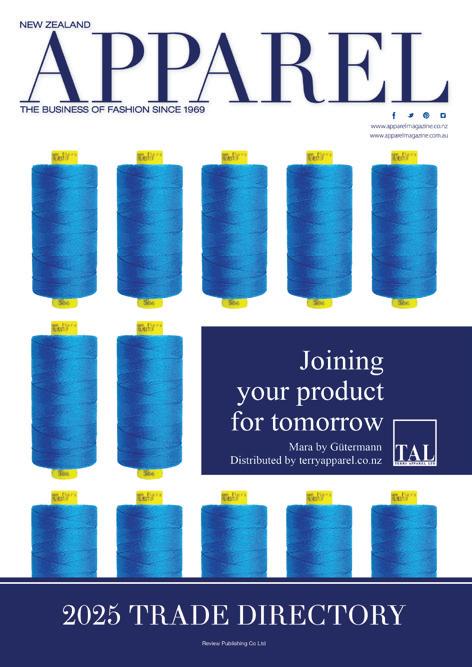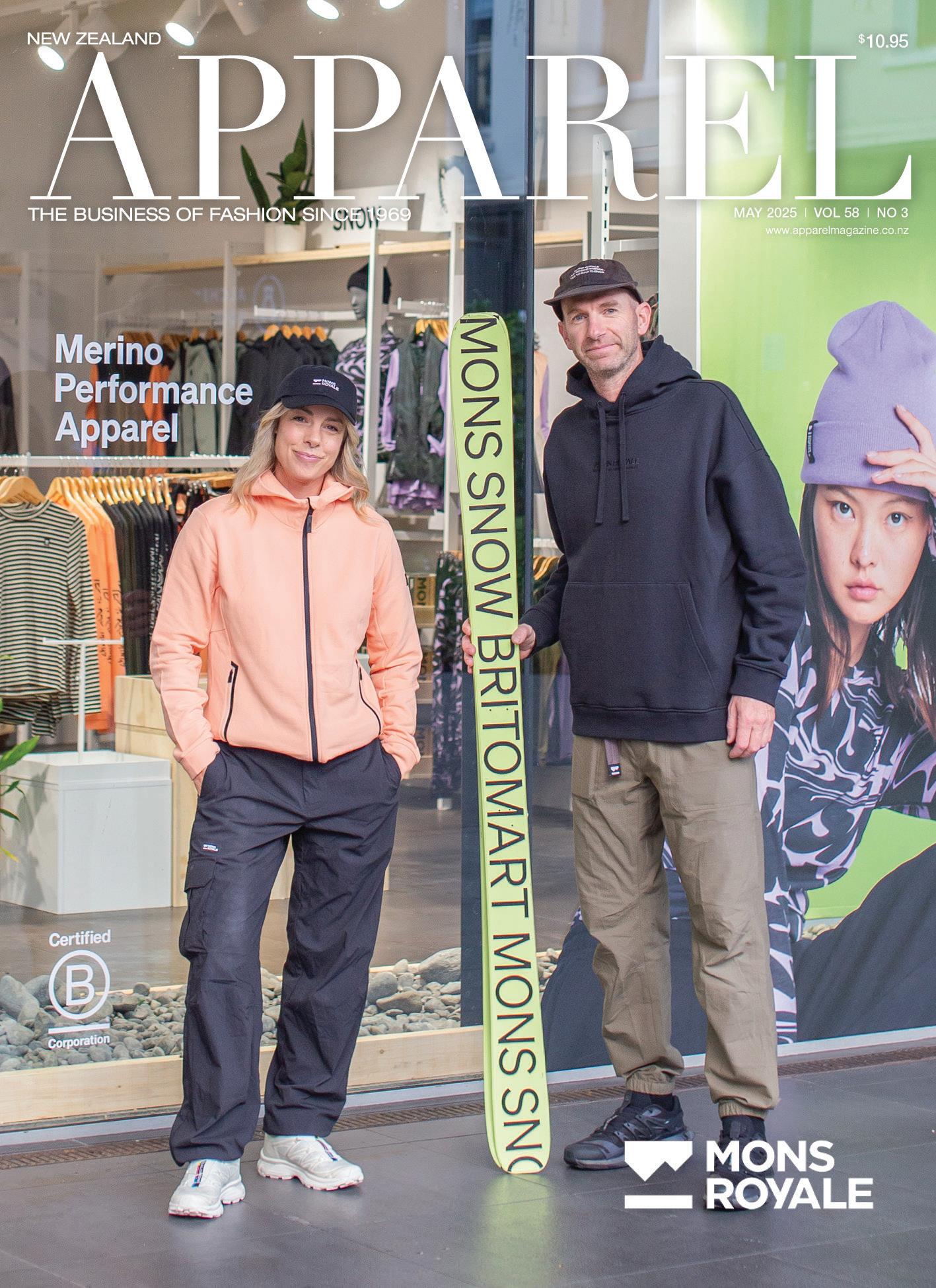Verified from farm to product.

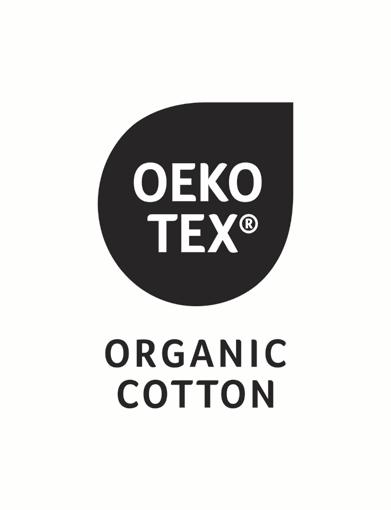
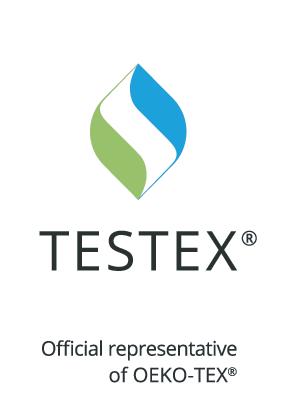
Choose OEKO-TEX ® ORGANIC COTTON for a caring approach to our environment and your health. TESTEX – Official representative of OEKO-TEX ® .




Choose OEKO-TEX ® ORGANIC COTTON for a caring approach to our environment and your health. TESTEX – Official representative of OEKO-TEX ® .
New Zealand Fashion Week has mirrored the wider shifts in the local industry, moving from a trade-first platform to a consumer-facing festival. Founded in 2001 as a place to present next-season collections to media and buyers, it reflected a time when forward orders and wholesale calendars dictated pace. That era overlapped with intense liberalisation after the 1983 Closer Economic Relations agreement with Australia, which deepened trans-Tasman trade and heightened price competition at home. As the tariff wall thinned, imported apparel became cheaper and more plentiful, forcing local designers to compete on brand, story and agility rather than on cost alone.
As import pressures grew, mass manufacturing faded. By the early 2000s most clothing factories had closed because locally made garments struggled to match the price of imports, especially from Asia. The result was an industry defined more by design, retail and marketing than by volume output. Labels increasingly



embraced vertical models and directto-consumer channels to own margin and customer data. On the runway, that shift translated into a desire to show clothes that were available immediately, to consumer audiences who could purchase quickly online or in-store.
Today’s New Zealand Fashion Week is explicitly consumer friendly. The programme at Auckland’s waterfront is ticketed, welcoming fashion lovers alongside editors and buyers, and the runways feature in-season pieces that audiences can purchase now rather than months ahead. The schedule leans into a festival feel, with film, talks and swaps that turn a trade timetable into a civic event. For vertical brands, the format doubles as a live storefront: shows build demand, social content converts reach, and on-site retail or e-commerce captures sales in the moment.
The evolution is cultural as well as commercial. The event now positions itself as a celebration of fashion’s contribution to the economy, culture and communities, not just as a showcase of fashion. It has also come to embody a



collective spirit, with designers sharing platforms, retail space and ideas, and spotlighting the value of both materials and the creative process.
What once blurred between trade and














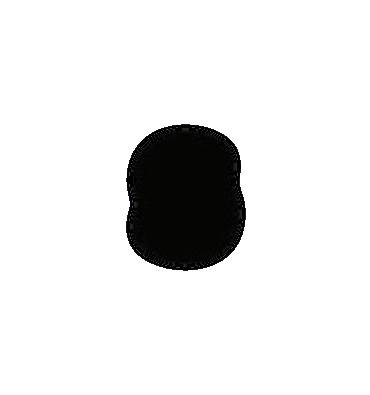





































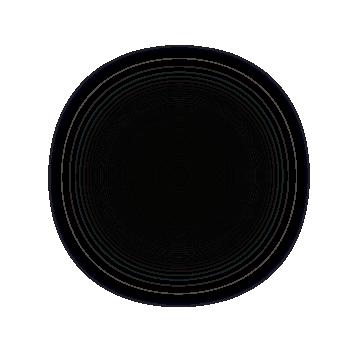

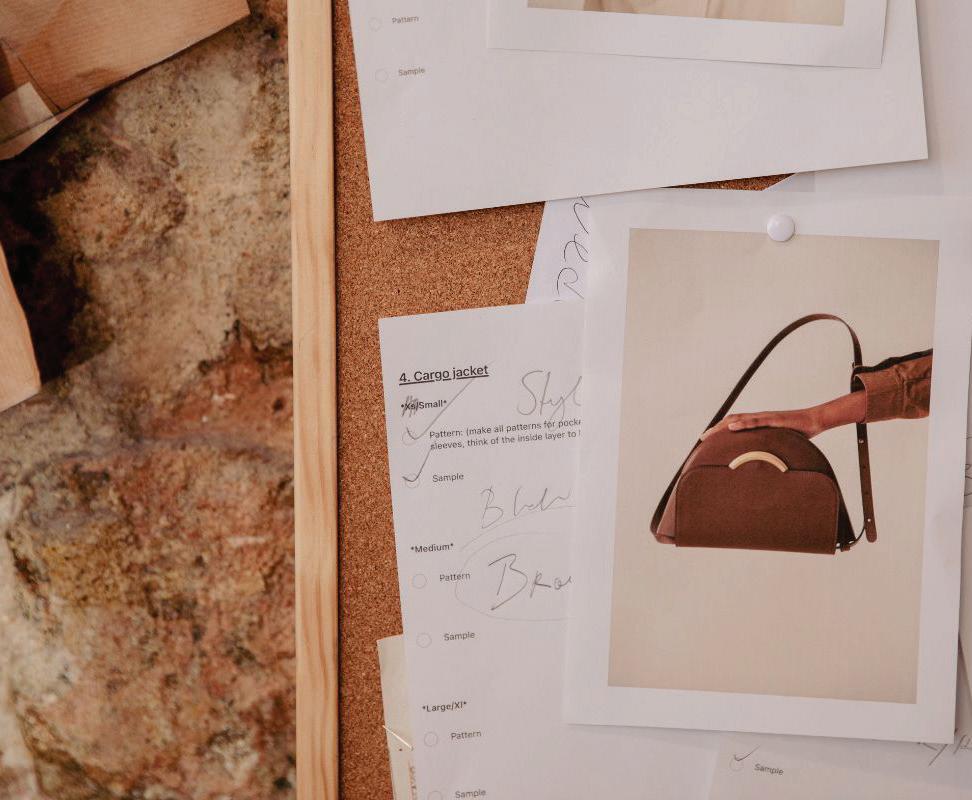
Converse has refreshed the look of their iconic All-Star Classic trainers, taking inspiration from the 70s soccer scene.
Slimmed down and flat-out classic, these trainers are going to be the new street style essential. They have been crafted from super soft suede to maintain the signature Converse look and feel.
With an OrthoLite cushioning interior and an EVA midsole for optimal support, these trainers are made for all-day wear. The footwear is finished with gold All-Star branding and unmistakable Star chevron to represent the legacy of this iconic shoe.
READ THE FULL STORY ONLINE

Small businesses are the heartbeat of New Zealand’s economy, but turning passion into a profitable, sustainable venture is no small feat.
That’s where the ANZ Business Boost comes in, a programme designed to give small business owners the tools, resources, and confidence they need to grow.
The initiative has already helped five small businesses rewrite their success stories. From black garlic to beauty, the results speak for themselves.
READ THE FULL STORY ONLINE

The Commerce Commission has issued a warning to Kmart NZ Holdings Limited (Kmart) for potentially breaching the Fair Trading Act and making unsubstantiated claims in its “100 percent sustainably sourced cotton” advertising.
Commerce Commission Competition, Fair Trading, and Credit General Manager, Vanessa Horne, said greenwashing has been a real concern, as well-intentioned consumers are led to believe products are more environmentally friendly than they actually are.
READ THE FULL STORY ONLINE
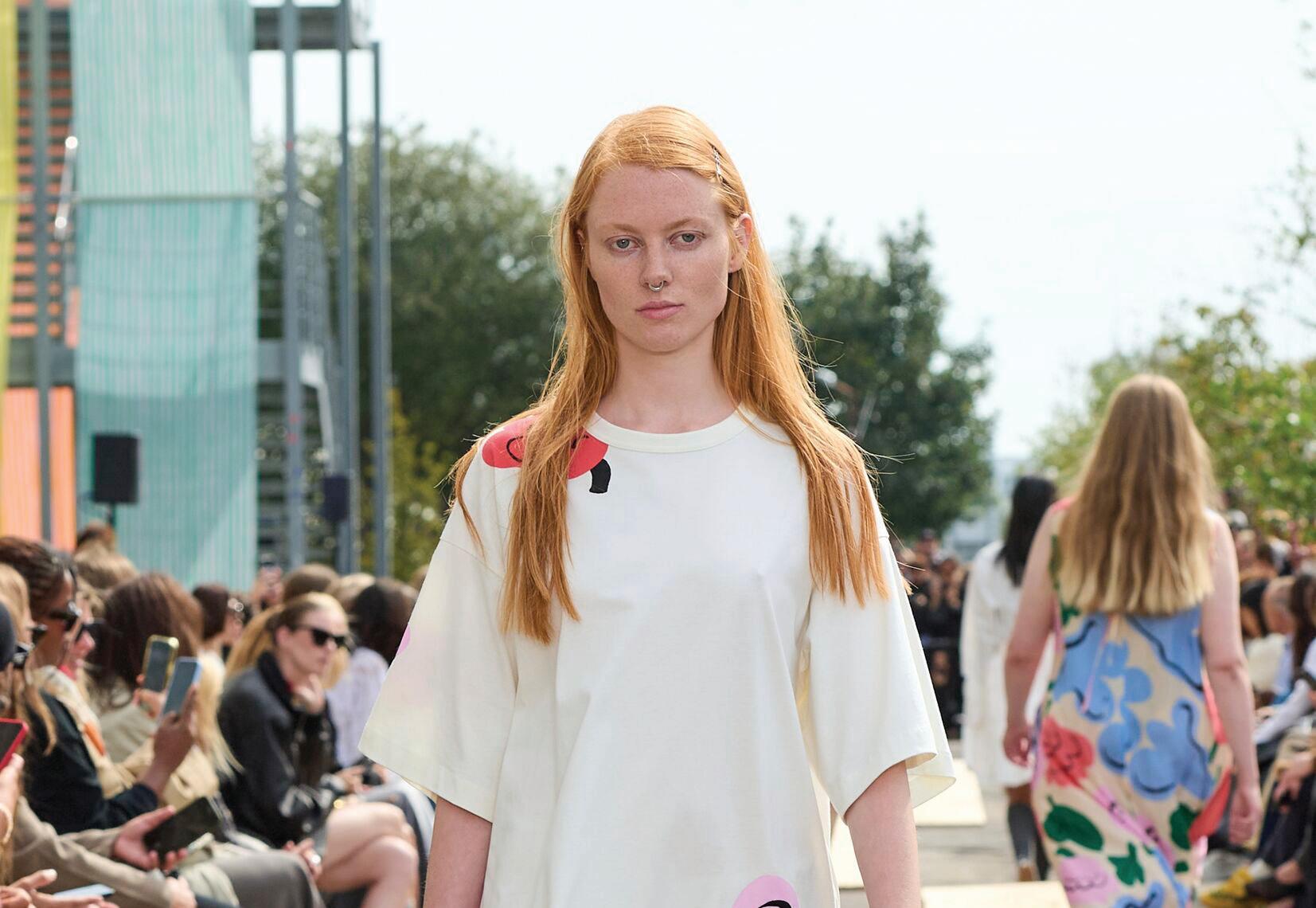
Inspired by the craftsmanship in the art of printmaking, the runway show was set in a former industrial site in the harbour of Copenhagen. The contradicting backdrop highlighted the energetic summer collection featuring playful proportions, balanced compositions, and Marimekko’s signature use of bold prints and colour.
READ THE FULL STORY ONLINE
Two years ago, surfwear designer Gemma Lee was forced to hit pause on her rising fashion label after a traumatic surfing accident left her with a serious concussion.

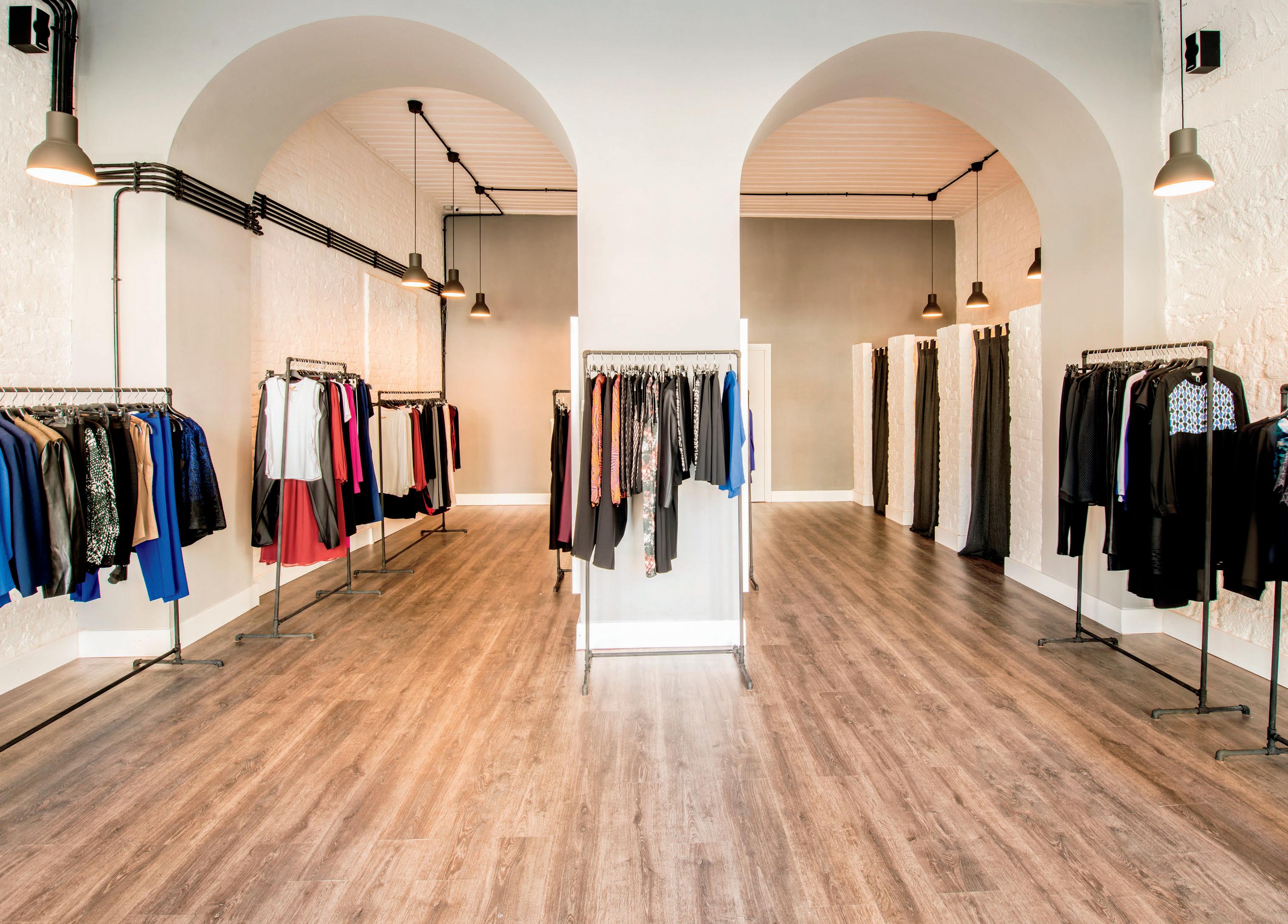
Make life easier with one integrated software solution to help you manage all the moving parts of your retail business. Purpose-built for the fashion industry, Apparel helps you monitor, manage and find efficiencies to help you grow.


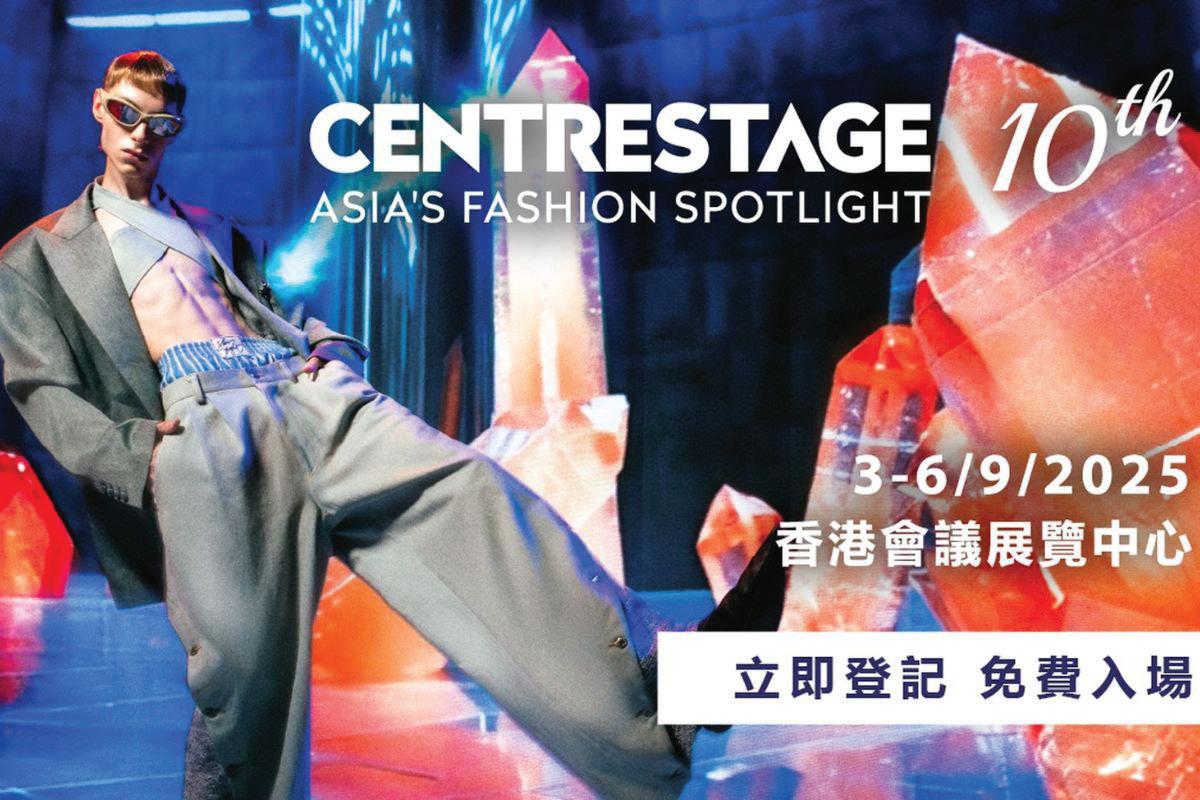
Unveiling a grand celebration of style for its 10th anniversary edition, this year’s CENTRESTAGE sees a record participation of some 260 brands from 24 countries and regions.
Organised by the Hong Kong Trade Development Council (HKTDC) and sponsored by the Cultural and Creative Industries Development Agency (CCIDA) of the Government of the Hong Kong Special Administrative Region (HKSAR), the four-day showcase is open to industry professionals and the public free of charge, welcoming visitors from Hong Kong, Mainland China and overseas to experience the charm and creativity of Asia’s fashion capital.
“Over the past decade, CENTRESTAGE
has become the perfect meeting point for fashion brands and designers from across the globe, and Asia in particular, to showcase their latest creations. As the event celebrates its 10th anniversary, we are truly privileged to welcome internationally acclaimed couturier Guo Pei to present a collection at CENTRESTAGE ELITES, marking her first solo couture show in Hong Kong," said Sophia Chong, Deputy Executive Director of the HKTDC.
"As the flagship fashion event for Asia, CENTRESTAGE not only celebrates virtuosity in design and craftsmanship, but also propels both local and international brands into the broader Asian market, supporting the vigorous development of the local fashion industry and reinforcing Hong Kong’s status as a global fashion hub and world-class East-meets-West centre for cultural exchange.”
This year’s CENTRESTAGE welcomes fashion brands from across the globe, including pavilions from the United
Kingdom, Cthe zech Republic, Japan and Thailand. The UK is participating for the first time as the "Partner Country" of CENTRESTAGE, showcasing unique creations from various British designers.
Globally acclaimed fashion maestro Jimmy Choo will not only attend CENTRESTAGE in person but also spotlight his visionary initiative, the Jimmy Choo Academy, showcasing works by emerging designers nurtured by the Academy.
The Czechia pavilion will present personalised fashion labels that incorporate art-glass design; the Japan pavilion will spotlight emerging designers and brands, showcasing the creative force of Japan’s new generation; and the Thailand pavilion returns on an unprecedented scale, leading more than 40 brands to the show and expressing the rich diversity of Southeast Asian style. Brands from South Korea, Singapore and other countries will also exhibit their collections at the fair.


Natural fibres have been a big part of Woolyarns’ history and are still the foundation for most of the products the company has continued to make over the decades.

Although starting with wool, it has also evolved to be the largest supplier of brushtail possum yarns since the late 1990s.
“Without the innovation of brushtail possum fibre yarns, Woolyarns probably wouldn’t exist today. It has been critical to the growth of the company as well as contributed to the wider New Zealand textile industry,” said Jimad Khan, International Sales & Marketing Manager at Woolyarns.
“Brushtail possum fibre is uniquely New Zealand and is a challenging fibre to work with. It has incredible softness and warmth to garments, making it a standout element in high-end yarn blends.”
Working with brushtail possum has driven Woolyarns to continually innovate, as seen in its latest creation, a baby cashmere spun to 2/40Nm, an exceptionally fine count for woollen-
spun yarn, creating the most luxurious products.
Another recent highlight was with Eidean, an American brand which created timeless, thoughtfully designed pieces using a blend of Australian cotton, silk and brushtail possum.
Locally, Woolyarns also works closely with its customers to create and refine the fibre blends in their yarns, many of whom have their own blend percentages and yarn counts chosen to suit their needs and market position.
For the Perino and Kaamera collections, which Woolyarns has supplied to several local designers as well as showcased internationally, it spent many years gathering feedback from research, trade shows, designers, brands and agents in markets such as Italy, France and Japan. Each blend was carefully chosen with a few final products in mind and positioned for a specific type of customer/market.
"Brushtail possum fibre is uniquely New Zealand and is a challenging fibre to work with. It has incredible softness and warmth to garments, making it a standout element in high-end yarn blends."
While Woolyarns has loved working with natural fibres, Khan said that came with challenges because every fibre has a natural variation. Natural fibres also absorb dye differently from synthetics, making precision with temperature, time, and chemistry essential.
At the same time, the natural variation of fibres made every product unique, while also offering warmth, temperature regulation, and comfort.
For designers or brands considering a switch to natural fibres, Khan emphasised understanding the unique characteristics of each fibre and working closely with suppliers and producers to develop the right blend and construction.
“Embrace the natural variation component that these fibres bring to your final products.”
In terms of sustainability, Woolyarns
Continued on pg. 10

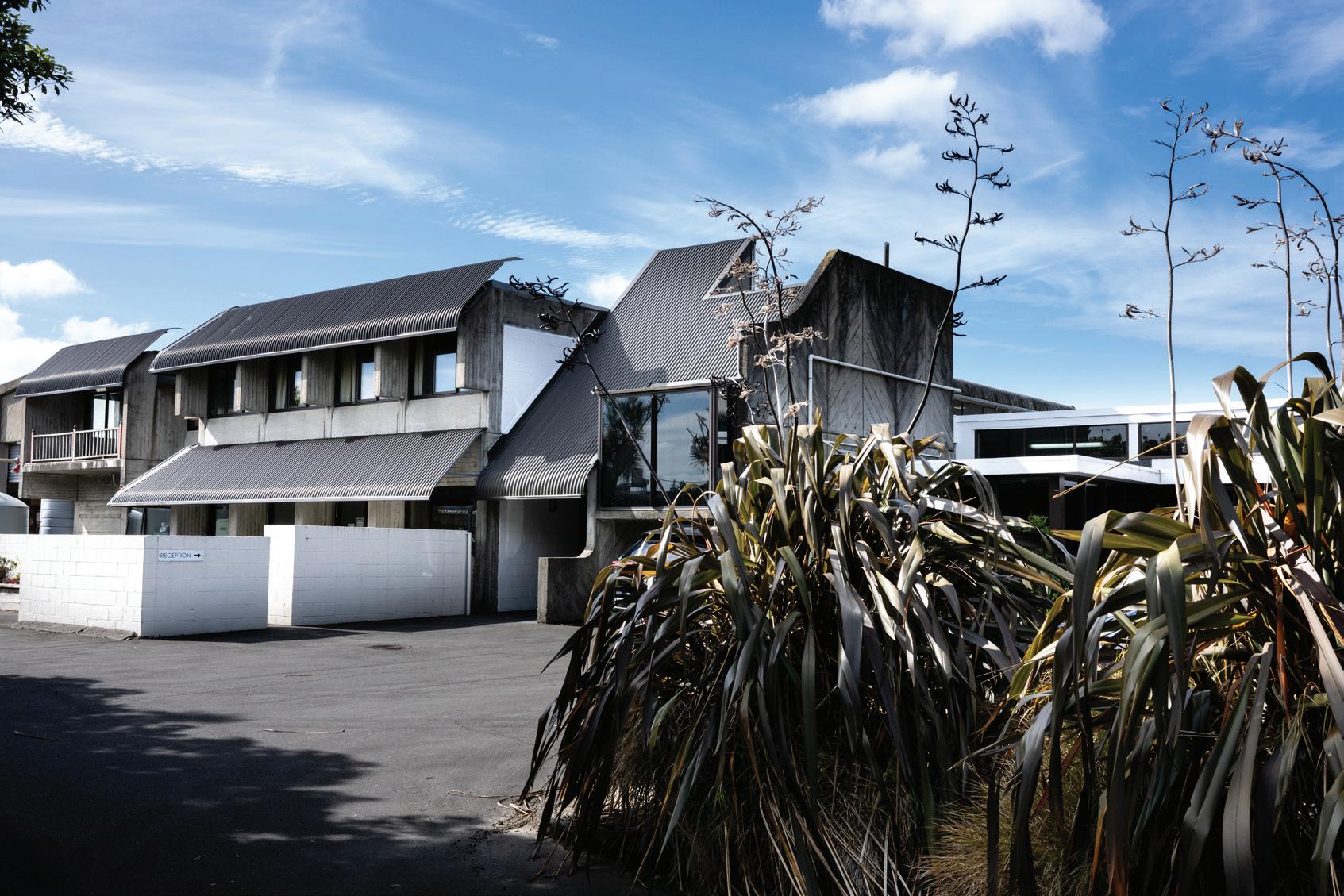
Continued from pg. 9
has adopted the Toitū Environmental Management System, which has put clear systems and targets in place and keeps the company focused on improving everything it does, including asking suppliers tough questions about sourcing.
In many cases, Woolyarns partners with companies like the New Zealand Merino Company to ensure the wool used meets strict quality and sustainability standards. For brushtail possum fibre, it works closely with Basically Bush Limited, who coordinate directly with trappers to make sure they follow strict guidelines.
The New Zealand Fur Council has also developed best practice standards and worked with MPI to officially recognise the industry, emphasising that possum trapping has played a vital role in conservation efforts in New Zealand.
Looking ahead, Khan was excited about the future of the local textile industry, especially with the recent development of New Zealand Cashmere.
Woolyarns has shown its commitment by investing heavily in the capability to process this fibre in New Zealand and has worked closely with growers and processors to build a sustainable, highquality cashmere industry. Its goal is to create a traceable, premium fibre that offers designers and brands a natural alternative to other cashmeres, with strong New Zealand roots and a focus on sustainability.
“We are still in the early stages of this project and a wee way from full commercialisation, but we see huge potential. We are already in talks with luxury brands like Hermès, Chanel, Givenchy and Johnson of Elgin about this project.”


Natural fibres have been a focus for the team at Wall Fabrics for over 30 years, who procure most of the fabric as deadstock.
Vitaly Sudoplatov, wholesale sales manager at Wall Fabrics, said this strategy formed a cornerstone of the business, in both the wholesale division, Wall Fabrics, and its retail arm, The Fabric Store.
Wall Fabrics offers a wide array of natural fibre fabrics, including cotton, silk, linen and merino wool, as clients have actively sought these fabrics for their superior performance and sustainability properties.
Merino wool, for example, has incredible performance properties, being warm and insulating, naturally
antibacterial, breathable, odour resistant, highly durable and able to regulate temperature and wick away moisture.
Sudoplatov also mentioned that commercial viability was always a necessary consideration for clients when they chose fabrics, and this was often where expertise and guidance from the teams came into play.
Many of the brands that Wall Fabrics has supplied have worked with them for years, and the sales team were uniquely familiar with their design style, brand values and the commercial



limitations that went along with their business models.
“Our sourcing model stems from long-term relationships with leading international designers, garment makers, mills, and agents. We’ve taken care to nurture these partnerships over many years, allowing us to continually source some of the best designer deadstock fabrics for the fashion market,” said Sudoplatov.
“This approach is firmly centred around our belief that ethical sourcing means delivering traceability, exclusivity and quality for our clients, many of whom would be unable to access these incredible fabrics directly due to high minimums and freight costs.”
Sudoplatov added that although the fashion industry cycled in alignment with broader trends, he was hopeful that through continued education and advocacy for ethical and sustainable sourcing, the awareness of the need for prioritising natural fibres would continue to move in the right direction.
The wealth of information now available around the ecological and social impacts of the fashion industry worldwide highlights the industry's heavy reliance on the mass production of cheap synthetic fibres. Wall Fabrics has noticed that this awareness has filtered down as a mindset shift for many everyday consumers, particularly over the last few years.
Looking ahead, Wall Fabrics was
incredibly proud to partner with ZQ to produce its 200gsm milled merino jersey range, in a small curation of classic and seasonal colours. As one of the few fabrics that it mills directly, the ZQ merino jersey range has been a true testament to the enduring appeal of natural fibres.
“World leaders for ethical wool, ZQ represents the wool of choice for worldclass brands and stands for quality, sustainability and connection, from the merino farmers, to our Vietnam-based production facilities, and through to the brands that purchase from us.”
This partnership with ZQ has allowed Wall Fabrics to trace its merino right back to its source farms, building a connection with the values, vision, and ethical farming systems that went into its production.
Considered guardians of the environment, each of these farms maintains individual long-term supply contracts with ZQ. These contracts provide sustainable wool price-points for farmers, meaning they can produce fit-for-purpose fibre, be recognised for their values and ethical farming systems, and have income stability.
“We love that these ZQ contracts give us the certainty that our merino fabrics are consistent in fibre quality, traceable to source, meeting environmental sustainability benchmarks and adhering to animal welfare and social responsibilities.”
Acrux Wool Systems has invested in modern robotics that facilitate a new method of garment production. This has allowed the company to build a unique and cost-effective system to convert 100 percent New Zealand-grown wool into high-performance garments.
“We exclusively use 100 percent New Zealand wool in our garments,
supplied by Wools of New Zealand. All of our garments are made in Christchurch,” said Tim Symon, CEO of Acrux Wool Systems.
“We have a wool processing system that ensures our woollen yarns are more durable, have a softer feel, and are less prone to pilling. Our manufacturing process creates fully seamless garments that fit better, feel better and perform better than traditional cut and sew garments, and creates zero waste material in the manufacturing process.”
These advances in both yarn processing and garment manufacturing mean that Acrux Wool Systems can achieve durability, consistency and wearability without the need to blend synthetic fibres into its garments, all of which are machine washable.
Innovations in yarn processing and garment manufacturing have been at the forefront of the business, and Symon was driven to show the market the potential of wool and the vast number of new applications it can have in garments.
“Wool is renewable, natural, and biodegradable, and creates breathable, moisture-wicking garments and odourresistant garments. We believe it to be the best material available.”
Instead of working backwards from end use to material selection, Symon said that the process started with the use of wool, which was then developed into garments with commercial applications.
Symon was excited about Acrux Wool Systems’ work with mid-micron wool and its application in functional and durable workwear garments as a sustainable alternative to synthetic materials.
“Our mid-micron Work Wool range is our brand champion. This is a unique range as it is made with a fibre almost twice as thick as merino, with all the same performance benefits but multiple times stronger.”
Created as a development for Sealord, the Work Wool hoodie has proved to be a customer favourite, and Symon looked forward to continuing to build a market for this range.
He added that the high-value commercialisation of this fibre in both local and export markets would help to increase the return that wool growers receive, a leading ambition of the business.
“We believe natural and renewable materials should be the first choice for any manufacturer, but the realities of a cost and margin-focused industry are that low-cost synthetic products have a huge piece of the market. Until consumers start making more sustainable choices, this is unlikely to change.”
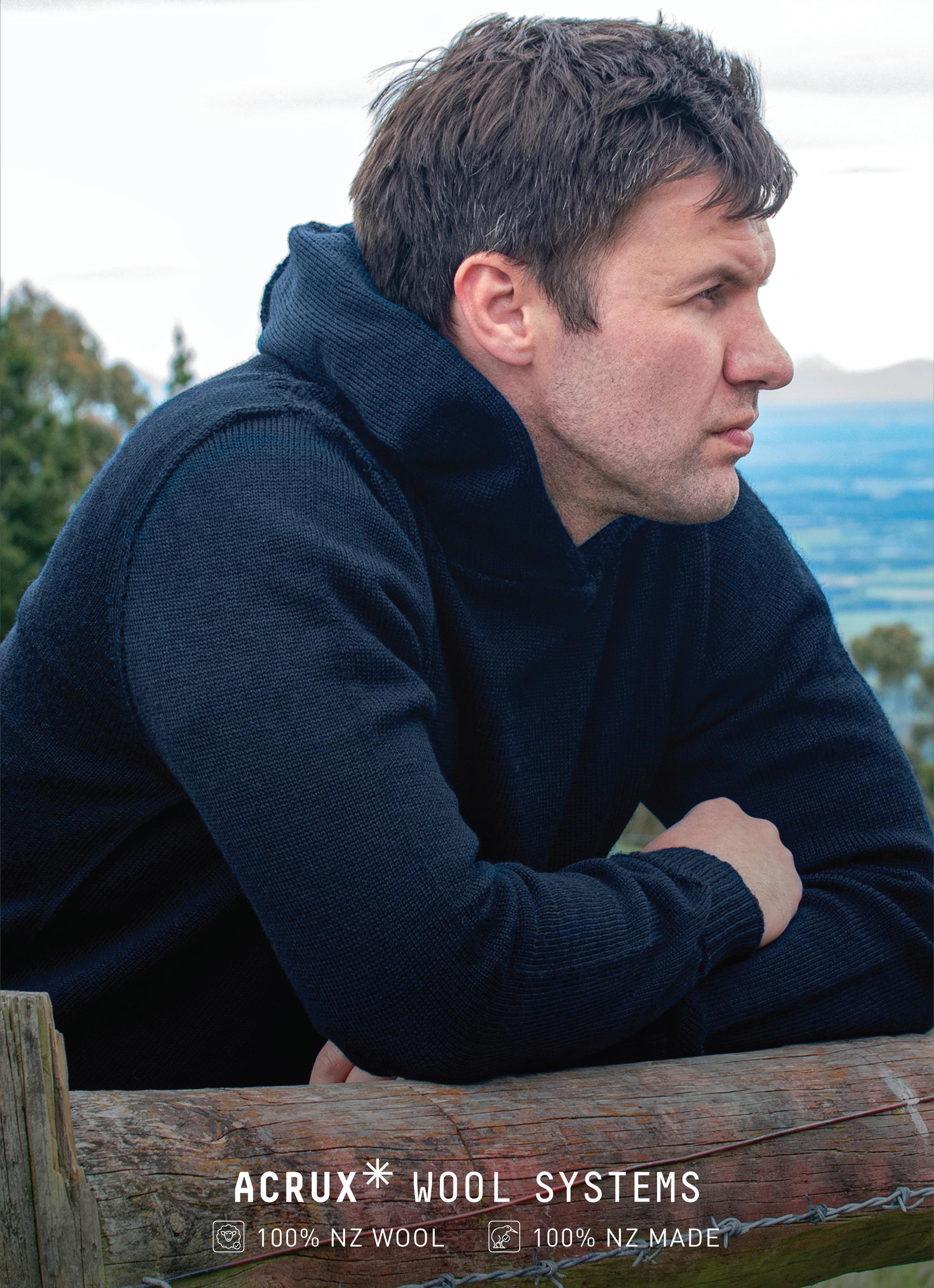

Adrion Atelier’s latest collection, “Opaque Boundaries - Me Seeing Me”, explored the deconstruction of hidden rules and opaque cultural expectations, particularly those shaping self-expression, appearance, and femininity in the workplace.
This was a continuation of the fashion house’s last collection, divided into two parts: Part 1, "A Nod to the Unseen Constraints," while Part 2, "Me Seeing Me," focuses on seeing oneself through a different lens.
Despite being a continuation of the themes, designer Adrian Williams has pushed further into exploring fabrication and expanding the brand’s style range. This collection showcases a broader spectrum, from a strong ready-to-wear collection to elevated, high-end pieces that reflect the brand’s craftsmanship and attention to detail.
At the same time, it was about presenting Adrion Atelier as a full creative house, capable of both wearable everyday pieces and statement garments that carry deeper artistry.
“The collection is built around the idea of ‘Opaque Boundaries,’ where structure meets fluidity and the line between sharp tailoring and soft draping starts to blur. I wanted to explore contrasts: light and shadow, precision and ease, concealment and revelation,” said designer Adrian Williams.

“Each piece holds that tension but still feels effortless to wear. The details reveal themselves the longer you look, in the way the garment moves, or how the fit and cut feel when wearing it.”
The collection moves between fluid silks, brushed wools, and featherweight knits, offset by technical blends chosen
for their drape, resilience, and subtle sheen. These modern materials hold the sharpness of a cut or the softness of a fold, allowing each silhouette to move with ease while maintaining its sculptural form.
To bring a tactile richness to the story, Williams said that he returned to more traditional atelier techniques, focusing on the art of hand finishing. This included individually placing feathers
and glass beads, applying a delicate decrease technique, and paying close attention to the finer details in construction.
These slow, meticulous processes not only elevate the garment's quality but also bring a sense of intimacy and craftsmanship that he said was hard to achieve through purely industrial methods.
There are a few hero pieces in the collection, all created with a focus on discovering the beauty of artisanal craftsmanship. One of the standouts is the SO/Dress - a stunning gold glass-beaded gown inspired by the elegant design and atmosphere of the gold suite at SO/Auckland, where the collection will be showcased during NZFW.
The dress drew on architectural and art curation influences, celebrating both structure and fluidity. It was designed to highlight and embrace the beauty of the female form, with intricate beadwork that catches the light and adds a sense of movement and depth.
For NZFW, Williams was also inspired by exploring contrasts, strength and fragility, light and shadow, and how they coexist within the wearer. He will be adding a personal element that reflects his journey, not just through the garments but also the music and atmosphere of the show, to create a cohesive and immersive experience.
“Each garment is a celebration of careful, hands-on creation that brings texture, detail, and soul to the work.”
The team at Untouched World travelled to a key design destination in Europe to gather inspiration for the Woven Together By Nature collection.
They returned dreaming about shadows styled by architectural silhouettes, lush greens creeping up stone brick walls, and nature weaving its way into the world with organic energy.
Softly tailored silhouettes sit alongside summer knits, complementing timeless staples elevated in luxurious natural fibres. Natural clay, pearl, and cobblestone tones reference earthy, muted stone, while shades of violet and rosewood resemble rambling flora.
Untouched World is well known for sustainable innovation, so it’s no surprise to find the brand is the first New Zealand brand to incorporate Brewed Protein™ by Spiber - a revolutionary new fibre into their collection.
Instead of sheep or silkworms, luxurious Brewed ProteinTM starts its life as humble sugarcane. Using a fermentation process, Spiber’s technology transforms sugar into a new kind of Brewed ProteinTM fibre, mimicking the softness of cashmere, the sheen of silk, and the loft of wool.
At its core, Brewed ProteinTM is a plant-based, lab-crafted material made with precision fermentation.
“Think of it as nature-inspired innovation, gently guided by science. At the end of its life, Spiber breaks down naturally,” said Esme Chiverton, Marketing Content Manager, Untouched World.
“Of course, we always feature beautiful New Zealand Merino too, along with Mohair, TENCEL™, and stunning linen cotton blends perfect for the summer months.”
Untouched World will be presenting a fresh perspective of its collection
"Think of it as nature-inspired innovation, gently guided by science. At the end of its life, Spibre breaks down naturally,"
at NZFW - the first full collection for new lead designer Moira Te Whata, who has worked her way up through the company, after starting out as a machinist.
The Untouched World team have worked alongside Dan Ahwa to bring their show together.
“Dan has done an incredible job of drawing on the brand’s 30-year legacy to ground the collection beautifully,” said Chiverton.
“Bespoke stripes feature on organic cottons, and an original print titled 'Organic Lines’ features on the Emeline Dress, a standout piece in the collection, made from 100 percent plant-based fibres.”
“A subtle interpretation of natural form, the 'Organic Lines creates a real sense of movement, and the cut of the dress is universally flattering and timeless.”
From design inspiration to fabrics, fibres and prints, this is quite literally a collection woven together by nature.



In her latest collection, ‘A Different Place and Time…’, designer Claudia Li revisited the DNA of her brand through the lens of who she is now, from the shapes to the details that always felt most natural to her.
‘ADifferent Place and Time…’ is about reconnecting with the past without being stuck in it, and Li described it as flipping through old memories and rewriting them with more clarity.
“There’s a dialogue between memory and the present moment,” said Li, as she played with silhouettes she used before but shifted the proportions, making them more assertive and unapologetic.
At the same time, she mentioned that there was a sense of softness running throughout the collection, balancing the remembrance of the past while also moving forward.
“Rather than new technology, it was about reworking traditional methods more exaggeratedly. Gathering, pleating, and twisting, but on a larger scale, with more intention behind how they interact with the body.”
For the collection, Li worked with a mix of embroidered tulle, sequins, cotton, velvet, and denim, along with a few speciality fabrics from Italy, Spain, Japan, and Korea.
The choice was about contrast, dense and structured against light and sheer, to give the silhouettes more presence and range. Every look carries equal weight, and together they tell the whole story.
“This collection feels more deliberate. It’s grounded in the signatures of the brand but reimagined with the confidence of time and distance.”
With NZFW being her first show in New Zealand and her first runway in three years, Li felt inspired by the new energy that was more intimate and more connected.
“I want the show to capture that feeling of returning home while also celebrating growth.”
Taylor Boutique’s collection this season was inspired by the emerging shapes and patterns from the afternoon light bouncing around a room.
The diffusion of form and details into a shape and then the manipulation of this shape as it traversed across different surfaces sparked Creative Director Vicki Taylor’s idea for ShadowPlay.
“I asked myself, what actually is a shadow? I researched different forms of light, natural and artificial, fascinated by the strength of natural light, where lumens even on a cloudy day outweigh a traditional household light. Every moment where the light lingers and the shadow recreates, shadows deepen and lighten,” said Vicki Taylor.
“Reflection and distortion of a shape happen, bringing with it a big question of “what is here and what is not?”
An absence or a haze can conceal a shape; these different experiences with changing light forms create different moods and experiences. I started thinking about how I can translate this into a garment.”
Every Taylor range starts with natural fibres: wool, silk, cotton. As these are traditionally flat fabrics, the team used patterning techniques, seaming and small openings and closure details to create different surfaces that light could play off.
“Patterning and fabrication choices are how we create pieces that move,
catching and reflecting the lights on different angles and creating different silhouettes. We enhanced how one part of the garment can obscure a light source, creating different shadow effects.”
Unexpected slits on garments allow light through, obscured shapes and panels create different shadow effects. Then a part of the garment is separated so that it would move to create different outcomes when illuminated.
The collection has also introduced special Italian fabrications like the 100 percent silk laser-cut fabric for the Tag Top, and the incredible Ribbon fabric, which is hand-woven from black and white ribbons, with rolls only 30cm wide, dictating that only specific garments can be made.
To explore the shadowplay diffused effect, Taylor created a print based on soft, light particles floating in the wind and studied how they diffuse the light, creating small shadows and spots, and as they move, they cluster together and scatter apart.
This was transformed into an artwork that was printed onto a beautiful silk crepe, the subtle crepe texture of the fabric reminiscent of the particles used to create the print.
Taylor has also embraced colour
a lot more than usual, with the PreCollection Prelusion Dress and Maximise Coat in Moonscape and Citrus setting the scene for the rest of the season. The aim for each collection has been to flow on from one another, creating buildable looks and colours that seamlessly work together in wardrobes.
For Vicki Taylor, the Wind particle print was a definite highlight. She said the way the pieces were cut meant that the placement of the print was different, making each garment unique.
“Mother Nature plays a game with light, constantly changing it, while the wind strengthens the particles and the diffusion, creating obscurities that are each unique and never repeated.”
This print, exclusive for the NZ Fashion Week show, will bring the audience into Vicki Taylor’s head and the journey from inspiration to creation of the Shadowplay styles.
She added that the show is the world that she built before conceiving the collections and described it like travelling into her thoughts, seeing the things that played out as she saw them, even before the garments emerged from the shadowy depths of her mind.
“For us this year, it is all about the lighting.”


Photo credit: Marissa Findlay
Zambesi's latest ‘Instrumental’ collection incorporated natural fibres and sheer textures to create a fluidity while playing with unexpected glimmers of sparkle and lace.
“The inspiration always begins with the fabric, and the collection grows from there as we play with silhouette, function and form,” said Elisabeth Findlay, designer and cofounder of Zambesi.
“Our belief that the clothes we wear are instrumental to how we move through the world and how we define ourselves within it.”
Each Zambesi collection evolves into the next, with the brand’s strength lying in staying true to its methodology and ethos. Instrumental is a quiet statement of independence, a nod to the avantgarde, and a foundation for individuality.
The collection revisited a past technique of screen-printing directly onto finished garments. Findlay added she loved the imperfect texture and individuality this created on the ‘Chronicle' oversized shirt.
One standout from the collection Findlay mentioned was ‘Harmony’, created using archival remnants of various fabrics she collected over the years.
“I love that it is almost a little piece of Zambesi history. It feels very personal.”
For Zambesi’s upcoming NZFW show, Findlay didn’t give much away before the show but hinted at an element of surprise and delivering the unexpected.



This season, the runway is a canvas for storytelling. From handworked details to painterly prints, designers are embracing fashion as narrative. Garments as vessels for memory, craft and imagination. Crochet, embroidery, illustration and patchwork remind us that clothes are not just objects of utility but carriers of culture and ideas. The thread becomes both literal and symbolic, tying together tradition and invention in a way that feels deeply human.
At Kartik Research, patchwork was elevated into poetry. A richly toned jacket, akin to Mara 6-3894, was pieced together with deliberate irregularity, layered over patterned trousers. The look spoke of heritage stitched into contemporary form, every seam telling its own story. The palette of earthy reds and mossy greens grounded the collection in craft, while the silhouette retained a sharp, modern confidence.
Pedro Andrade leaned into illustration as wearable script. A crisp white ensemble, echoed in Mara 2-4147, became a moving canvas for abstract sketches and handwritten markings. The effect was both intimate and enigmatic, like a personal diary writ large across fabric. Its stark minimalism amplified the drawn motifs, bringing the audience closer to the designer’s imagination.
Colour became bold and assertive at










Worn with ease, it struck a delicate balance between nostalgia and modern sensuality. An heirloom reimagined for the present.
Craig Green pushed textile storytelling toward the fantastical. A structured knit in leafy green, similar to Mara 12-283, was animated with appliquéd blooms in vibrant pinks. Paired with a sharply tailored mini, the look embodied Green’s ability to meld utility with whimsy.
Closing the thread, KidSuper staged fashion as a fable. A head-to-toe look in cream printed with scrawling text and motifs, shaded close to Mara 5-365, was finished with a pointed hat and oversized bow. The ensemble evoked childhood, costume, and storytelling in equal measure. It blurred the lines between theatre and fashion, elevating the idea that every garment can be part of a larger narrative, whether whispered or shouted.
Taakk, where a cobalt shirt embroidered with black florals radiated downtown cool. The saturated hue, a match for Mara 10-278, gave structure to fluid trousers, creating tension between precision and relaxation. Here, embroidery shifted from delicate embellishment to graphic statement, proving that surface design can command as much attention as silhouette.
Romanticism unfurled at Jacquemus, where a floor-length crochet gown enveloped the model in intricate lacework. Its ivory tone mirrored Mara 1-610, soft and tactile yet undeniably sculptural. The piece suggested the patience of handcraft, every loop a gesture of time and care.








Unfolding over the next season in a series of releases, Bibliotheca is a study in form, layering, and timeless narrative.
Each piece is designed as both statement and staplegarments to be reinterpreted, and loved.
It was the first year they had all returned to this place in many moons. Three sisters, fates entwined by the long stems of coastal wildflowers, a shared summer Odyssey back to where they came from.
They had come to trace the stories written time and time again, the myths of heroes and lovers, a lexicon stored in the season. This is NOM*d Bibliotheca.
The first of the three sisters had a voice like a siren song. It was said she could swim out to the sandbar without coming up for air, her skin polished by the saltwater. The Prologue Slip, tessellated with the Perseus Print, protected her with its deep underwater chronicle. It is these tales, hidden inside her Textbook Bomber, of Marine tragedies and battles waged on Stone, that are forever talismans to her.
The second sister always woke early.
In the Hemera Dress, or the Eos Top, she followed the path of the sun as if she were tethered to its shimmering surface. She would climb to the peak of Olympus and watch the light bake the crepe fabric of her Classic Pieces to a rich Chestnut, and the hem of her Saga Skirt gather the Green Olive filodes underfoot.
And the third, in the Janus Dress, was sparkling and mysterious. Her sisters merged into a mirror in her, two sides of the same glinting coin. Her silver hair ran. Foiled rivulets down the shoulders of her soft blue tee, an archive of ancient waterways. A series of archways ruled her mind, a world seen through many eyes, a mesh woven by Arachna. She was a true Gemini, her truth held in the stars, the vast V that their constellation formed, somehow both primeval and Sci-Fi.
These three sisters, finally together, their secrets carrying on the dusty sirocco. All they wish for is to be recognised on arrival.

LSKD is set to open its fourth New Zealand store at Ponsonby Central, Auckland, marking its second location in the city.

This expansion follows the brand's recent openings in Christchurch and Mount Maunganui, which drew over 900 and 630 community members, respectively, some even camping outside the day prior to the store openings.
The new Ponsonby Central store aims to bring LSKD's high-quality, functional sportswear closer to the vibrant Auckland community. LSKD's CEO and Founder, Jason Daniel, expressed enthusiasm about the brand's growing footprint in New Zealand.
"We're excited to connect with our Kiwi community in Ponsonby and continue to inspire people to be one percent better every day,” said Daniel.
“This new store is a huge part of our mission to create spaces where our community can connect, experience our products firsthand, and be part of the LSKD culture."
The Ponsonby Central store will offer LSKD's full range of high-performance activewear, designed to support sports, fitness, and everyday adventures.
To celebrate the grand opening, LSKD plans to host exclusive events, including a tights and shorts swap initiative that encourages the community to trade in pre-loved activewear for brandnew LSKD pieces. This initiative, part of the brand's Project Earth program, emphasises sustainability and was a standout success at previous store openings.
In addition to the swap, the community can look forward to limited-edition Auckland-themed merchandise, special promotions, and in-store surprises. LSKD remains committed to hiring locally, supporting New Zealand athletes, and fostering an active lifestyle culture.
Inspired by legendary Kiwi teams like the All Blacks, the brand incorporates values of teamwork, resilience, and leadership into its operations, even training staff with insights from the bestselling book "Legacy" by James Kerr.
The Ponsonby Central store opening signified LSKD's ongoing commitment to the New Zealand market, with plans for further expansion in the future.

LSKD Ponsonby Central Store Opening: Date: 30th of August
Location: Ponsonby Central, Auckland Doors Open: 8.30 am
Silk & Steel has relaunched its signature Couture Collection, paying homage to the brand’s strong 16-year history of making handcrafted, one-of-a-kind jewellery with a touch of vintage glamour and contemporary flair.
Reminiscent of the era belonging to the 1920s, 1940s and 1950s, Silk & Steel has garnered a reputation for its bespoke pieces created from brooches, earrings and jewellery fragments. Its original creations have since laid the foundation for its bold modern vintage style.
The return to one-of-a-kind pieces has blended collectable classic pieces with directional materials like curb chains, gemstones, faux pearls and signature spike and cross detailing. The new chapter of the Couture Collection has aimed to celebrate heritage and reinvention, and all pieces are made in Silk & Steel’s studio in Auckland.
Sarah Cotterall, Founder and Creative Director of Silk & Steel, said that couture was a celebration of the label’s ‘why’, and explored the artistry, individuality and stories behind each piece.
“This collection honours our past, while pushing boundaries with futurefocused, collectable design,” said Cotterall.
Every piece in the Couture Collection has been designed to be entirely unique, each showcasing its own individual characteristics and style. Many pieces in the collection feature repurposed brooches, from vintage pieces to iconic mid-century houses like Weiss, while others showcase sculptural chain work, convertible silhouettes, and limited-edition artisan detailing.
Whether it's a necklace, a pair of earrings, or a body piece, every design is handcrafted to allude to the status of a wardrobe staple.
Highlights of the Couture Collection include the starburst body harness that transforms any outfit, a double-chain necklace featuring a 1950s vintage brooch, or a striking mixed-metal spike design, Silk & Steel Couture has invited fashion-lovers to experience a rare and exciting collection.
Since it was established in 2009, Silk & Steel has become one of New Zealand’s most prominent brands, known for its attention to detail, focus on quality and craftsmanship, aesthetic and fusing of elegance with creative edge.

The announcement of a third charity op shop in Auckland's St Heliers village should spark real debate, not celebration.
Op shops once existed to serve communities, not target them. They were founded on the principles of affordability, accessibility, and grassroots support. Increasingly, large charity retailers are opting to lease expensive retail space in upscale suburbs. The reason is clear: wealthy areas generate highervalue donations and attract buyers who can afford to pay more. However, just because the strategy is financially successful does not mean it aligns with the charitable mission.
Cathy Crichton, General Manager of Retail at SPCA, said the organisation does its best efforts to secure good value lease options to ensure it maximises fundraising opportunities. Therefore, out of due diligence, the SPCA runs a feasibility process to best ascertain the potential surplus contribution to animal welfare.
Crichton said this is critical as 90 percent of its animal services operational costs are funded by donors and commercial business operations, including SPCA Op Shops.
For some, these are no longer local shops supporting their communities. They have become destination stores for bargain hunters chasing designer labels. They are curated to attract spending, not to offer low-cost goods to those doing it tough. In some scenarios, pricing now reflects location, not need, and the customer base reflects wealth, not welfare. That should concern any charity that claims to stand for equity,
inclusion, and support for vulnerable people or indeed animals.
Charities argue that the money raised in these premium locations is reinvested in services. But at what cost? When the premises themselves contradict the organisation's values, something is fundamentally out of step. It is not enough to say that funds go to a good cause. The way those funds are raised also matters.
National Retail Manager at Hato Hone St John, Emma Stokes, said the percentage of expense costs are reasonably similar, and that main centres tend to cost more for prime retail real estate. However, the number of customers and the income generated balance that.
“Each store's pricing reflects the community which we serve and we ensure all stores have a range of pricing to fit every customer’s budget and needs. All funds raised in the stores stay within the local community to support the important work we do,” said Stokes.
Crichton said that upmarket locations generally perform in-line or below the percentage of operating costs of op shops in more modest areas, due to the higher volume in sales.
“Our op shop teams do their best to work within a pricing framework which both recognises the donors intention of providing valuable fundraising for animal welfare, by selling these goods at a fair and reasonable price for both the customers and to optimise fundraising,” said Crichton.




Charity shops should be visible in all communities, not just those with high foot traffic and luxury donations. Leasing decisions should reflect purpose, not just profit. A charity that chooses to spend its donor-raised funding on high-end retail leases risks losing touch with the very people it exists to help.
Crichton said that as it’s the objective for the SPCA to raise funds to support the national animal welfare priorities, SPCA Op Shops are located in a range of different suburbs.
“We also recognise that our customers are more environmentally conscious when shopping for sustainable solutions of pre-loved products. Customers are also motivated to op shop for valuebased economic reasons, and others may be seeking more unique or collectable preloved treasures.”
Stokes said many factors are taken into account when looking to open new stores, including accessibility for both customers and customers dropping off donations, costs and street presence.
“We are blessed with generous donations in all our stores and grateful
that people entrust us to raise funds through their preloved items.”
She added that all stores have a balance of pricing and range of goods available, with the average price of an item of women’s clothing being NZD 6.
Stokes said that Hato Hone St John Op Shops prevented almost two million items from going into landfill last year.
“We aim to provide affordable preloved items whilst raising funds for community good and supporting the environment.”
There is an opportunity here for charities to lead by example. Instead of mimicking the commercial strategies of chain retailers, they could return to a more grounded, mission-aligned model. One that chooses modest, functional spaces in everyday suburbs. One that keeps pricing accessible and the doors open to everyone. One that places values above visibility.
If a charity shop is going to carry the word 'charity' above the door, it should also carry it through every decision it makes. That includes where it chooses to trade.


amid an economic downturn, businesses are dialing back on spending. While it’s smart to shed non-essential tools and initiatives, cutting the systems that power efficient, data-driven decision-making can do more harm than good.
There are nice-to-haves, and there are need-to-haves. The tool that helps you make cost-saving, customercentric, trend-forward decisions? That’s not the place to cut corners.
A retail intelligence solution helps ensure profitability during tougher economic times. It empowers your teams to make smarter pricing decisions that protect margins, build assortments aligned with real-time demand, and manage your site and promotions to avoid costly overstocks. With costs rising, customer loyalty declining, and trend cycles accelerating, retailers need to prioritize precision and clarity. That starts with investing in the right intelligence.
WHAT’S HAPPENING IN RETAIL?
Retailers’ reality has shifted, posing new challenges that require modern solutions. General tools might’ve worked before, but now, retailers’ success depends on precise, retail-
specific intelligence that can help them adapt as fast as the market changes.
1. Customer Loyalty Is Crumbling
Brand affinity is no longer a safety net. Today’s shoppers are quick to move on if a better option appears — and it often does. McKinsey states that, globally, only 30% of consumers feel loyal to a fashion brand, and 46% have switched retailers in the past 12 months, often citing price and relevance as the main drivers.
To retain customers, retailers need to be more in tune with what consumers want now, and what will influence them next.
Retail intelligence connects your customer data with real-time market insights, so you can identify when preferences are shifting, why it’s happening, and how to respond with the right products, prices, and messaging to win retention and meet your customers where they are.
2. Tariffs and Economic Pressures Are Increasing Costs
At a time when the economy is uncertain at best and on the brink of a potential recession at worst, there is little wiggle room when it comes to margin.



Rising costs demand better margin control and assortment efficiency.
According to Kearny, fashion retailers globally report average cost increases of 19–25% due to a mix of tariffs, labor, and raw material price hikes — especially in cross-border sourcing.
In a high-cost environment, protecting margin isn’t optional. Retailers need to cut inefficiencies, make smarter buys, and reduce costly missteps.
Retail intelligence helps optimize assortments and pricing strategies by aligning internal performance data with market trends and competitor moves, allowing you to do more with less, and protect profit where it matters most.
3. Trend Cycles Are Speeding Up
In today’s TikTok-driven society, there can be dozens of micro-trends popping up every single day. But, only a small fraction of these trends transform into meaningful market shifts with commercial viability.
Zalando reported that over 50% of trend-driven SKUs in 2024 had a sellthrough rate below 60%, reflecting the cost of betting on fast trends without precision.
Reacting to trends without market context and retail-specific data leads to excess inventory and margin loss. That’s

why retail intelligence like EDITED is valuable — it helps separate noise from what’s actually gaining traction.
4. Excess Inventory Is Killing Margin
Excess stock doesn’t just take up space, it also eats into your bottom line.
In today’s environment, overbuying is one of the most expensive mistakes a retailer can make.
Holding excess inventory costs 20–30% of its value annually due to warehousing, obsolescence, and markdowns, according to Harvard Business Review. It’s a global issue impacting retailers across EMEA, APAC, and North America alike.
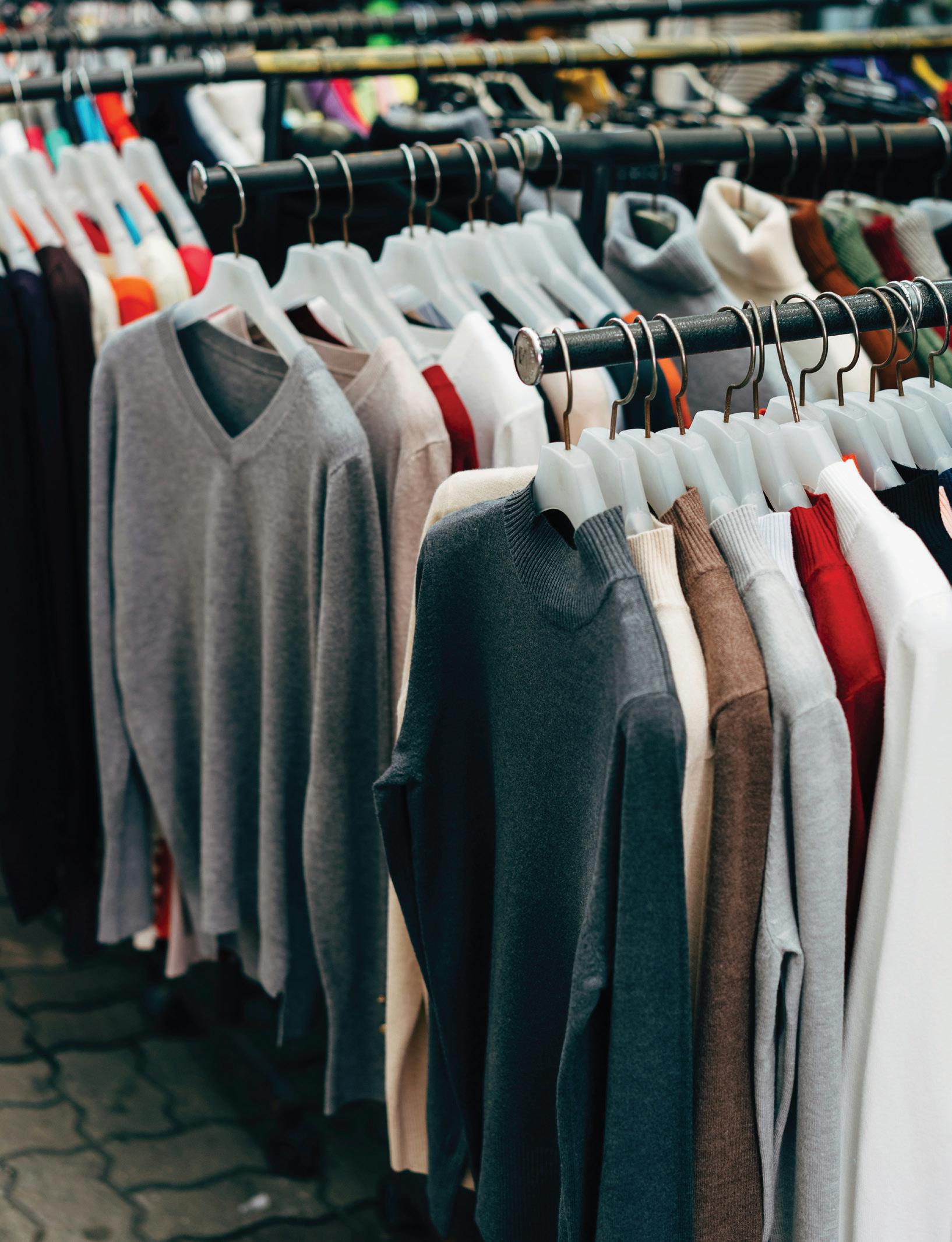
With the right retail intelligence tool, you can forecast more accurately by aligning internal sales trends with market-level signals, helping you buy smarter, reduce overstock risk, and protect margin across the lifecycle of your products. And, understand how to optimize site merchandising to drive visibility and sell-through on overlooked inventory.
5. Price Sensitivity Is on the Rise
With thin margins and rising costs, pricing precision is critical to your bottom line and customer retention.
PwC highlights that 80% of consumers say price is the top factor when deciding where to shop. And, McKinsey reports that just a 1–2% improvement in pricing can boost operating profits by 8–10%.
The right price is one that’s competitive, sustainable for your business, and compelling for your customer.
Retail intelligence helps you set and adjust prices with confidence by combining market-wide pricing visibility, competitor promotions, and your own performance data. It ensures every pricing decision supports your bottom line while still meeting customer expectations, even as conditions change.
Retail has changed, and will continue to. Without retail intelligence to connect your internal data with realtime market insights, you fall behind competitors, lacking the clarity and confidence to act quickly, reduce waste, and grow smarter.
The most successful retailers won’t be the ones who play it safe; they’ll be the ones who invest in making better decisions, faster – even in volatile times.
Now is the time to invest in retail intelligence. Book your demo here.



Contact: Caitlan Mitchell
T: +64 21 615 316
E: caitlan@reviewmags.com www.caitlanmitchell.com
PDS/Pattern Grading & Marker Planning System. StyleCAD is helping hundreds of companies in Australia, New Zealand & Fiji. Plus thousands world-wide.

T: +61 2 976 44455
E: graeme@elizabethmachines.com.au www.elizabethmachines.com.au

Unit 2A, 8 Corban Avenue, Henderson, Auckland, New Zealand
Contact: Shay Narsey
T: +64 9 838 8674 or +64 21 274 2910
E: info@directsewing.co.nz www.directsewing.co.nz


10 Gordon Road, Morningside, Auckland, New Zealand
Contact: Simon Wall
T: 0800 285 223
E: info@identitys.co.nz www.identitys.co.nz


12c Piermark Drive, Albany Auckland, New Zealand
Contact: Bruce Hutchings T: +64 9 571 1151
E: bruce@kudos.co.nz www.kudos.co.nz
Tired of waiting months to get the cash for work you’ve done back into your business where it belongs? With Pacific Invoice Finance you’ll have the money as soon as you’ve sent the invoice.
Tired of waiting months to get the cash for work you’ve done back into your business where it belongs? With Pacific Invoice Finance you’ll have the money
Finance House, Level 1, 183 Montreal Street, P O Box 22 321, Christchurch. Phone: (03) 379 0528

Level 14, 120 Albert Street, P O Box 3292 Auckland, Phone: (09) 377 8490
Finance House, Level 1, 183 Montreal Street, P O Box 22 321, Christchurch. Phone: (03) 379 0528
0800 INVOICE/0800 468 6423
pacificinvoicefinance.co.nz 0800INVOICE
Level 14,120 Albert Street, P.O. Box 3292, Auckland, New Zealand
Level 14, 120 Albert Street, P O Box 3292
Auckland, Phone: (09) 377 8490
Finance House,181 Montreal Street, P.O. Box 22 321, Christchurch, New Zealand
pacificinvoicefinance.co.nz 0800INVOICE
E: info@pifnz.co.nz www.pacificinvoicefinance.co.nz





55 Longhurst Terrace, Cashmere, Christchurch, 8242, New Zealand
Bruce Moore Enterprises Ltd
Contact: Bruce Moore
PO Box: 12160 - Beckenham
T: +64 274 341 433
E: bruce@bma.co.nz www.propress.nz

Patterns made with passion and expertise
phone 027 4061 336 | email sue@patternpotentials.co.nz S i m p l y t u design i nt o reality w i t e c t du o .

Samples cut and made with quality and flare
phone 021 425 149 | helenh@hsr.co.nz

276 Manukau Road, Epsom, Auckland, New Zealand
Contact: Rachel Beechey
T: +64 9 520 5290
E: rachel@roses.co.nz www.roses.co.nz



New Zealand’s number one supplier of industrial sewing, embroidery, steam & curtain automated machinery. LEADING BRANDS: Juki, Tajima, Brother, Pegasus, Jiffy, Eisenkolb, Typical, Stirovap, Siruba


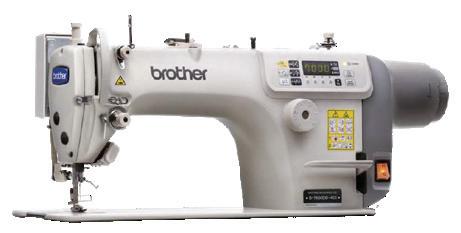
0800 475 016 www.sewingtime.co.nz
• sales@sewingtime.co.nz • christchurch@sewingtime.co.nz
• 23 Fairfax Ave, Penrose, Auckland • 77A Brisbane St, Sydenham, Christchurch


VICTORIA TAYLOR LTD
61a Randolph Street, Eden Terrace, Auckland, New Zealand
Contact: Mandy Tomlinson
PH: 64 27 227 0157 E: mandy@taylorboutique.co.nz
31a Elliot Street, Papakura, Auckland, New Zealand
Contact: Shannon Gribble
T: +64 9 299 6801
E: shannong@stirlingcutting.co.nz www.stirlingcutting.co.nz





Unit i, 29 Sir William Avenue, East Tamaki Auckland, New Zealand
Contact: Doug Todd
T: 0800 736 352
E: sales@vitag.co.nz www.vitag.co.nz
WALL FABRICS LTD
25 Gordon Road, Morningside, Auckland, New Zealand
T: +64 9 361 6162
E: sales@wallfabrics.com www.wallfabrics.com




25-27 Eastern Hutt Road, Wingate, Lower Hutt, New Zealand
T: +64 4 920 5301
E: enquiries@woolyarns.co.nz www.woolyarns.co.nz
